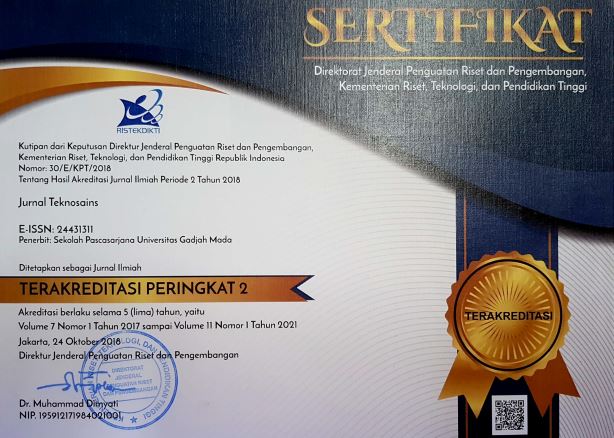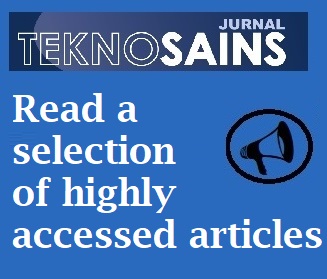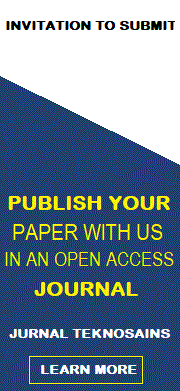Architectural typology of water infrastructure: Case study of green open space and heritage site of perigi pekasem in Bangka Belitung
Reza Arlianda(1*)
(1) Architecture Department, Engineering Faculty, University of Bangka Belitung
(*) Corresponding Author
Abstract
Indonesia as the top 10 countries in extensive groundwater extraction, has fallen behind in providing basic water services infrastructure. While the water utility in Indonesia only provides 35.15% coverage nationally. As case, Bangka Belitung as the lowest province in water management provision with only 17.26% coverage faces tremendous sustainable issues because of its massive exploitation of water usage for domestic, industrial, and especially tin mining activities. Indeed, in spite of fact that water infrastructure is always an essential part of the history of the built environment such as the Roman aqueduct, India’s Stepwell, and Nasqa Puquio. In Indonesia has shown that the number of architectural studies focused on improving the water services is small. In response to Sustainable Development Goals number 6 on clean water and sanitation, this study aims to contribute and mainstream the discussion of green infrastructure in the architecture discourse by analyzing and identifying its typology and design elements using the heritage-built environment of Bangka Belitung’s perigi as the case study. The result of identified design elements and typology on the cultural landscape can further be used to enrich the architecture discussion and design vocabulary on Indonesian cities’ urban fabric and contribute to the expected achievement progress on sustainable development goals.
Keywords
Full Text:
PDFReferences
[1] UN WATER, Sustainable Development Goal 6 synthesis report on water and sanitation 2018. Geneva: United Nations Publications, 2018. Accessed: May 02, 2022. [Online]. Available: https://www.unwater.org/publications/sdg-6-synthesis-report-2018-on-water-and-sanitation/
[2] Indonesia, “Undang-Undang Nomor 11 Tahun 1974 Tentang Pengairan,” 1974, [Online]. Available: https://peraturan.bpk.go.id/Home/Details/47422
[3] BPS, “Statistik Air Bersih 2015-2020,” Jakarta, 2020.
[4] PUPR, “Buku Kinerja BUMD Penyelenggara SPAM 2019,” Jakarta, 2019.
[5] United Nations, The United Nations World Water Development Report 2022: Groundwater: Making the invisible visible. Paris: UNESCO, 2022. Accessed: May 02, 2022. [Online]. Available: https://www.unwater.org/publications/un-world-water-development-report-2022/
[6] PUPR, “Informasi Statistik Infrastruktur PUPR 2020,” Jakarta, Nov. 2020.
[7] W. Adi, S. P. Sari, and Umroh, “Efektifitas Filter Bahan Alami Dalam Perbaikan Kualitas Air Masyarakat Nelayan Wilayah Pesisir Kabupaten Bangka,” Akuatik J. Sumberd. Perair., vol. 8, no. 2, pp. 34–39, 2014.
[8] C. N. Nita and A. D. Hasanah, “DAS Rusak, Biang Konflik Manusia dengan Buaya Muara di Bangka Belitung,” Mongabay, 2022. https://www.mongabay.co.id/2022/04/24/das-rusak-biang-konflik-manusia-dengan-buaya-muara-di-bangka-belitung/
[9] F. Pirwanda and B. H. Pirngadie, “Dampak kegiatan tambang timah inkonvensional terhadap perubahan guna lahan di Kabupaten Belitung,” J. Planol. Unpas, vol. 2, no. 3, pp. 177–194, 2015.
[10] M. Dieleman, “New town development in Indonesia: Renegotiating, shaping and replacing institutions,” Bijdr. tot Taal-, Land- en Volkenkd., vol. 167, no. 1, pp. 60–85, 2011, doi: 10.1163/22134379-90003602.
[11] J. Widodo, “Urban Environment and Human Behaviour: Learning from History and Local Wisdom,” Procedia - Soc. Behav. Sci., vol. 42, no. July 2010, pp. 6–11, 2012, doi: 10.1016/j.sbspro.2012.04.161.
[12] N. Maryaningsih, O. Hermansyah, and M. Savitri, “Pengaruh infrastruktur terhadap pertumbuhan ekonomi Indonesia,” Bul. Ekon. Monet. dan Perbank., vol. 17, no. 1, pp. 62–98, 2014.
[13] A. Asnuddin, “Pendekatan partisipatif dalam pembangunan proyek infrastruktur Perdesaan di Indonesia,” Smartek, vol. 8, no. 3, 2010.
[14] Guskarnali, A. Rosita, and D. E. Andini, “Uji Kualitas Air Pada Lahan Bekas Tambang Inkonvensional di Kecamatan Merawang, Kabupaten Bangka,” Promine, vol. 6, no. 2, pp. 37–45, 2018.
[15] E. S. Wijianti, Nurhadini, and Saparin, “Peningkatan Kualitas Air Minum Menggunakan Penyaringan Sederhana Berbasis Limbah Cangkang Siput Gonggong di Desa Kulur Ilir Kabupaten Bangka Tengah,” J. ABDI Media Pengabdi. Kpd. Masy., vol. 3, no. 2, 2016.
[16] L. Miradyanti, F. Srinaga, and J. Dewi, “River-Space Development as a Social Interaction Space through the Placemaking Approach,” Built Environ. Stud., vol. 2, no. 2, pp. 1–8, Oct. 2021, doi: 10.22146/best.v2i2.1108.
[17] D. J. Tangkuman and L. Tondobala, “Arsitektur Tepi Air,” Media Matrasain, vol. 8, no. 2, pp. 40–54, 2011, [Online]. Available: https://ejournal.unsrat.ac.id/index.php/jmm/article/view/325
[18] I. G. L. M. Parwita, I. G. A. D. Paramita, I. N. A. PW, and K. A. Suryawan, “Kajian Pengembangan Infrastruktur Mata Air Tukad,” Matrix J. Manaj. Teknol. dan Inform., pp. 59–68, 2016.
[19] I. G. L. M. Parwita, I. wayan Arya, I. G. S. Wibawa, and M. Sudiarsa, “Penataan Mata Air Beji Kaler Dengan Konsep Arsitektur Tradisional Bali Berkelanjutan Arrangement,” Inersia, vol. VIII, no. 2, pp. 7–16, 2016.
[20] R. J. Lawrence, “The Interpretation of Vernacular Architecture,” Vernac. Archit., vol. 14, no. 1, pp. 19–28, Jun. 1983, doi: 10.1179/vea.1983.14.1.19.
[21] Y. Antar, “Public Space and Cultural Heritage,” 2020. [Online]. Available: https://www.youtube.com/watch?v=HPOWCxKnoRk
[22] Y. I. GÜNEY, “Type and Typology in Architectural Discourse,” BAÜ FBE Derg., vol. 9, no. 1, pp. 3–18, 2007, [Online]. Available: http://fbe.balikesir.edu.tr/dergi/20071/BAUFBE2007-1-1.pdf
[23] PUPR, “Peraturan Menteri Pekerjaan Umum dan Perumahan Rakyat Republik Indonesia No. 27/PRT/M/2016 tentang Penyelenggaraan Sistem Penyediaan Air Minum.” Jakarta, 2016. Accessed: May 02, 2022. [Online]. Available: https://peraturan.bpk.go.id/Home/Details/104463/permen-pupr-no-27-tahun-2016
[24] C. Ross, “The tin frontier: Mining, empire, and environment in Southeast Asia, 1870s-1930s,” Environ. Hist. Durh. N. C., vol. 19, no. 3, pp. 454–479, 2014, doi: 10.1093/envhis/emu032.
[25] Y. HS, “Analisis Dampak Pertambangan Timah Rakyat Terhadap Bencana Banjir,” Prodi Manaj. Bencana, vol. 3, no. 1, pp. 57–73, 2016.
[26] A. Z. Zakaria, I. H. Salleh, and M. S. A. Rashid, “Landscape Furniture Present in the Ancient Malay Garden According to Old Manuscripts and their Effects on the Formation of Malay Garden Design Concept Model in Malaysia,” Procedia - Soc. Behav. Sci., vol. 91, pp. 28–35, 2013, doi: 10.1016/j.sbspro.2013.08.397.
[27] M. Haji Salleh, “Hang Tuah in the Sea of Oral Malay Narratives,” Malay Lit., vol. 25, no. 2, pp. 121–158, 2012, doi: 10.37052/ml.25(2)no1.
[28] Bangka Belitung, “Pergub Kepulauan Bangka Belitung No 7 Tahun 2020 Tentang Rencana Induk dan Rencana Aksi Kawasan Strategis Paiwisata Provinsi Pangkalpinang - Mendo Barat - Bangka Tengah dan Sekitarnya,” Pangkal Pinang, 2020.
[29] S. Nijhuis and D. Jauslin, “Urban landscape infrastructures: Designing operative landscape structures for the built environment,” Res. Urban. Ser., vol. 3, pp. 13–34, 2015, doi: 10.7480/rius.3.874.
[30] S. Nijhuis, “Principles of landscape architecture,” no. January 2013, 2017, doi: 10.13140/RG.2.1.1446.3126.
[31] C. Bartesaghi Koc, P. Osmond, and A. Peters, “Towards a comprehensive green infrastructure typology: a systematic review of approaches, methods and typologies,” Urban Ecosyst., vol. 20, no. 1, pp. 15–35, 2017, doi: 10.1007/s11252-016-0578-5.
[32] J. J. Norwich, The Great Cities in History, Paperback. London: Thames & Hudson, 2016.
[33] N. S. Grigg, Water, wastewater, and stormwater infrastructure management. CRC press, 2010.
[34] K. Lynch, The image of the city. MIT press, 1964.
[35] C. Alexander, A pattern language: towns, buildings, construction. Oxford university press, 1977.
[36] M. Weinreich, “Keynote : Vernacular architecture,” pp. 5–13, 2016.
[37] M. Chakrabarti, “Stepwell-The Water Architecture of India,” Pakistan Herit., pp. 103–120, 2017, [Online]. Available: https://ph.hu.edu.pk/public/uploads/vol-9/08-Stepwell – the water architecture of India.pdf
[38] R. Lasaponara, J. Lancho Rojas, and N. Masini, “Puquios: The Nasca response to water shortage,” in The Ancient Nasca World, Springer, 2016, pp. 279–327.
[39] D. Deming, “The Aqueducts and Water Supply of Ancient Rome,” Groundwater, vol. 58, no. 1, pp. 152–161, 2020, doi: 10.1111/gwat.12958.
[40] I. P. Sriartha and S. R. Giyarsih, “Spatial zonation model of local irrigation system sustainability (a case of Subak system in Bali),” Indones. J. Geogr., vol. 47, no. 2, p. 142, 2015.
[41] A. M. Salamanca, A. Nugroho, and M. Osbeck, “Bali’s subaks and the UNESCO World Heritage Site,” Bangkok, 2015.
[42] J. McIntosh, B. Marques, and K. Fairbrother, “Architecture of geothermal places: socially and culturally responsive therapeutic landscapes,” J. Cult. Geogr., vol. 38, no. 1, pp. 28–49, 2021, doi: 10.1080/08873631.2020.1820682.
[43] R. G. Sunaryo, “Mengikuti langkah pikir Romo Mangun: Sebuah tinjauan mengenai metode perancangan arsitektur Yusuf Bilyarta Mangunwijaya,” Dimens. J. Archit. Built Environ., vol. 35, no. 1, pp. 41–45, 2007.
[44] UNESCO, “Selection Criteria of World Heritage Site,” 2022. https://whc.unesco.org/en/criteria/
[45] PUPR, “Panduan Kualitas Visual Infrastruktur Bidang Cipta Karya: Prasarana dan Sarana Air Minum,” Jakarta, Mar. 2015. Accessed: May 09, 2022. [Online]. Available: http://ciptakarya.pu.go.id/v5/e-book/2/Buku-Panduan-Kualitas-Visual-Infrastruktur-Bidang-Cipta-Karya
[46] B. Idaman, S. Silitonga, and Y. Qin, “The pattern of lingga village based on history,” J. Teknosains, vol. 11, no. 1, p. 26, 2021, doi: 10.22146/teknosains.60797.
[47] C. Marlianto, “Kesal Sering Dilanda Banjir, Warga Kulan Kampak Pasang Spanduk Sindiran,” Bangkapos.com, 2022. https://bangka.tribunnews.com/2022/03/26/kesal-sering-dilanda-banjir-warga-kulan-kampak-pasang-spanduk-sindiran?page=all
[48] A. Z. Zakaria, I. H. Salleh, and M. S. A. Rashid, “Identity of Malay Garden Design to be Promoted as the Cultural Tourism Product in Malaysia,” Procedia - Soc. Behav. Sci., vol. 153, pp. 298–307, 2014, doi: 10.1016/j.sbspro.2014.10.063.
[49] Kemdikbud, “Sistem Registrasi Nasional Cagar Budaya,” 2022. http://cagarbudaya.kemdikbud.go.id/search?search=perigi
[50] Indonesia, “Undang-Undang Republik Indonesia Nomor 11 Tahun 2010 tentang Cagar Budaya,” Jakarta, 2010.
[51] Pangkalpinang, “Perda Kota Pangkalpinang 1/2012 tentang Rencana Tata Ruang Wilayah Kota Pangkalpinang Tahun 2011-2030,” Pangkalpinang, 2012.
[52] N. Inge, “Ngeri, Perigi Ini Jadi Tempat Pembuangan Mayat di Pangkalpinang,” Melayupedia.com, 2021. https://www.melayupedia.com/berita/1399/ngeri-perigi-ini-jadi-tempat-pembuangan-mayat-di-pangkalpinang
[53] World Bank, “A Catalogue of Nature-based Solutions for Urban Resilience,” Washington, D.C, 2021. Accessed: Apr. 29, 2022. [Online]. Available: http://hdl.handle.net/10986/36507
[54] D. Pearlmutter et al., The Urban Forest. Springer, 2017.
[55] L. Barazzetti, M. Previtali, and M. Scaioni, “Procedures for condition mapping using 360° images,” ISPRS International Journal of Geo-Information, vol. 9, no. 1, 2020, doi: 10.3390/ijgi9010034.
Article Metrics
Refbacks
- There are currently no refbacks.
Copyright (c) 2022 Reza Arlianda

This work is licensed under a Creative Commons Attribution-ShareAlike 4.0 International License.
Copyright © 2024 Jurnal Teknosains Submit an Article Tracking Your Submission
Editorial Policies Publishing System Copyright Notice Site Map Journal History Visitor Statistics Abstracting & Indexing










